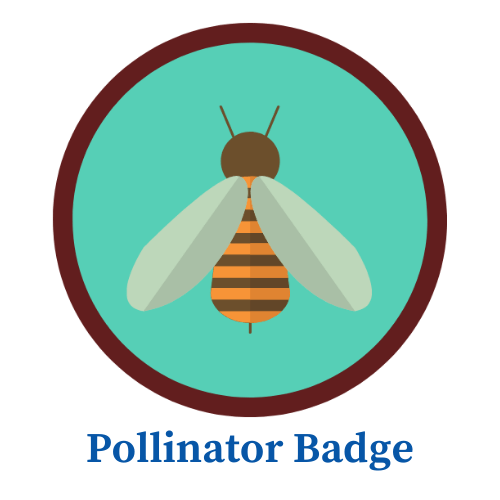
Have you heard the buzz? Pollinators are some of the coolest critters on the block and we can’t get enough of it on our preserves!
Pollinators fly and crawl all around us and play such an important role in creating our food! Without pollinators we wouldn’t have most of our favorite foods such as cacao for chocolate, grains for pastas and breads, fruits, veggies and more!
Can you name a pollinator? Do you know what makes a pollinator a pollinator? Learn all about the wild world of the pollinator and how they help every single one of us on a daily basis through the activities below. Complete at least one activity from each section and log your progress to earn this buzz worthy badge.
Section 1
Watch Pollination of Flowers: Watch this 6 minute video on YouTube to learn all about the process of pollination. You will learn about the parts of the flower, what it takes to pollinate, and several examples of pollinators!
Section 2
Backyard ID Sheet: In your very own backyard you can be a scientist! Collect data by counting all of the pollinators that you can find and by taking note of what plants you see them interacting with. If you are lucky, you might even be able to see pollination in action! As an optional bonus craft, there are instructions on how to create a hummingbird feeder to attract your very own ruby throated pollinators!
Pollinator Hotel: Pollinators have the same basic needs that we do; air, food, water, and shelter. Create your own pollinator hotel by building one yourself or buying a kit all ready to go. Bees see best in blues, yellows, and whites, so if you want paint it, those are the best colors to use. You can use tin cans, wooden boxes, and pvc pipes for the exterior and then any pithy plant or bamboo is great to use for the interior. Below are instructions from Nat Geo Kids and a pamphlet for best practices.
Bee Baths: Have you ever seen a bird bath? Now shrink it down in your mind and you have a bee bath! Bees need clean water just like all animals do, including us. In this activity you will create a source of clean water which can be as simple as placing a small bowl of water outside in a shady spot or you can complete a quick craft by using a small 2 inch terra cotta pot as the bottom and a 4 inch terra cotta base as the “bath.” Then you can add a few pebbles or rocks before filling the bath up with water so that they are halfway up the rocks so the bees have somewhere to stand without falling in! You can find an example image below and a pamphlet on why bee baths are important!


